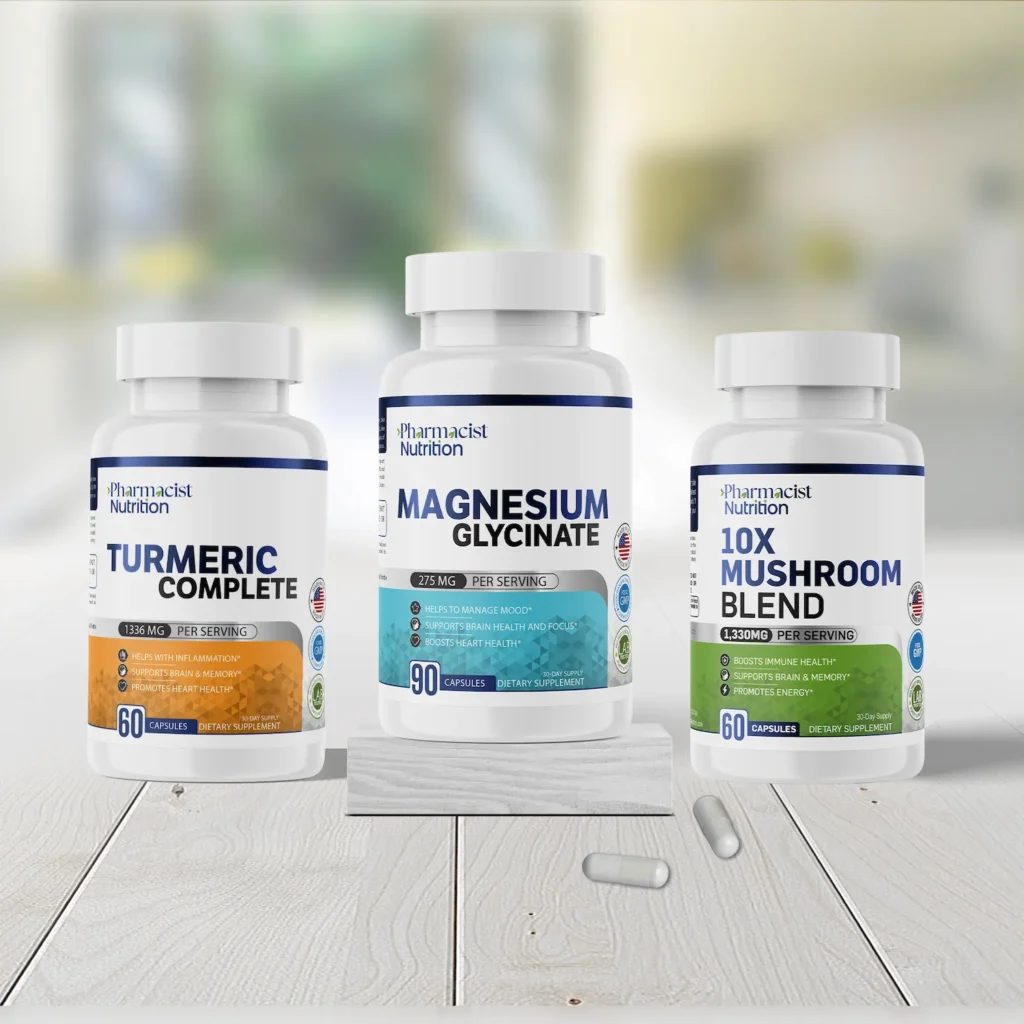
Today, we’re going to continue our Shroom Series with another interesting mushroom… Cordyceps.
Before… I mentioned that the most interesting mushroom to me was the Lion’s Mane. But…I think it’s actually cordyceps. And you’ll kind of see why later, it’s definitely more in my wheelhouse.
Now… You’ve probably heard of cordyceps without even knowing. Maybe not by name but… by what they do.
There’s a certain subspecies of cordyceps that… zombify insects. Like, basically takes over its brain. But of course, these are subspecies, it can’t do it to a human, and when we consume them, they’re obviously not living anymore.
They already sound… pretty cool already right?
They live on insects, they thrive in harsh environments in the himalayas and they’ve been used in both ancient traditions… and today, in modern wellness.
And it’s really fascinating where they come from and I wish had origin stories for a lot of these kinds of things.
But they were first noticed by herders in the Himalayas who saw that their animals became more energetic when they ate these mushrooms.
Then it was adopted into Traditional Chinese Medicine to help with things like fatigue, breathing or lung issues, stress, and even sexual health. There people even called it “Himalayan Viagra.” and it became popular among emperors and nobility.
And today, we still use it. Not as Himalayan Viagra because well, we have real Viagra. But we use it for a lot of other things. It’s marketed worldwide as a natural supplement to help boost energy, boost the immune system and improve endurance.
Now, I have a theory. And it might be influenced by Hollywood and Film but the reason it was so coveted back in the day was because of its rarity.
And you know how the story goes with kings and queens always wanting rare and extravagant things because it’s so much more appealing when you can have something very few other people can get.
As I just mentioned, cordyceps were originally found in the Himalayas… high-altitude regions of Asia where they grow by infecting and mummifying the larvae of insects like caterpillars.
Being so rare, you could expect it to be pretty darn expensive, costing thousands of dollars per kilo because of how difficult it is to grow and harvest wild cordyceps.
Because of this, we’ve developed a different cordyceps that could be grown in a more manageable environment, still contains the same stuff in it, and doesn’t rely on insects making it much easier to produce.
So what’s actually in the Cordyceps Mushrooms.
There’s two main active components that we consider: Cordycepin and Adenosine.
Cordycepin is the compound, as far as I know, that is unique to cordyceps and we associate it with anti-inflammatory and antioxidant properties meaning, it can help reduce inflammation and protect cells from what we call, oxidative stress.
Some studies also look at its possible effects in cancer by interfering with the growth of cancer cells.
What made me curious about Cordyceps is its potential to increase energy levels.
A lot of my close friends have noticed, at least these last couple years… I’m out to get more energy from anything. I want to stay awake, I want to stay alert, and I want to stay motivated, and I think that starts by having the energy to do stuff.
The challenges of my life have led me to seek more ways to get my energy levels up so I can do more things with limited time. And that is what ultimately brought me here today… getting more interested in nutrition and making this podcast.
So how does it help you get more energy?
And the answer… as always is ATP. We talk about ATP a lot on this channel because it’s the ultimate form of energy your body uses.
And just a quick lesson again, for anyone who didn’t tune into our Creatine Episode.
ATP stands for Adenosine TRIphosphate and is comprised of 2 things, 2 components, Adenosine, and 3 Phosphate Groups.
And we previously talked about how Creatine can help introduce more phosphate groups into the picture to replenish them faster.
In contrast, the main components Cordyceps, the Cordycepin and Adenosine introduce the other component to ATP. Cordycepin is structurally similar to Adenosine. And Adenosine… is Adenosine.
The mushroom is able to provide more raw material for more ATP.
I came across a study in the The Journal of Alternative and Complementary Medicine from 2010 that was a double-blind placebo-controlled study, that talked about Cordyceps benefits of improved oxygen efficiency. Which goes along with our last episode. They found that Cordyceps is helpful in improving VO2 Max which as we know is an indicator of cardiovascular health and life expectancy.
And it might due this due to effects of adenosine. I didn’t find it directly mentioned in the studies that I’ve come across, but there are Adenosine receptors called A2a and A2b which dilate blood vessels.
Like it makes your blood vessels which you can think of as pipes, wider… so you can push more blood through.
And improving that circulation, you’re able to drive more oxygen to your tissues and your organs, especially during physical activity.
When your muscles get more oxygen, they go through aerobic respiration which is the production of ATP, much more efficiently.
Another way that is suggested that Cordyceps help with energy is through improved mitochondrial function.
The mitochondria is the powerhouse of the cell. It’s really hard to go through high school science and to never hear that phrase.
But mitochondria is very susceptible to free radical damage.
Basically, when you metabolize and make energy, you actually… naturally make free radicals which are molecules that are unstable. And we actually use free radicals for protection but that’s a topic for another day.
But to stabilize themselves, they tend to latch on to other molecules that are… very important, like DNA, Proteins, Cell membranes, and kind of… interfere with their normal function. And we call this oxidative stress.
So what we want to do here is to neutralize those free radicals with Antioxidants, which I bet everyone here has heard of.
And Cordyceps is supposed to be a powerful antioxidant which protects the mitochondria from damage so they can produce more ATP for a longer period of time.
There’s was also some research that suggested that cordyceps also improved mitochondrial biogenesis, which means making more mitochondria.
And of course if you make more mitochondria, you can make more energy.
Another thing that cordyceps are supposed to do is help regulate blood sugar levels.
So it’s interesting for people with type 2 Diabetes who are looking to help maintain their blood sugar levels.
If you have type 2 diabetes, and you take cordyceps and other mushroom combinations, and you test on a daily basis. I would love to hear about those results. So definitely reach out.
But what cordyceps is suggested to do is improve insulin sensitivity. Meaning it helps the body respond more effectively to insulin which is the hormone that helps bring the sugars in your blood into your cells.
Another factor I’ve seen mentioned is the regulation of the liver. I think this one is a lot less believable to me but it’s suggested that it inhibits the liver from releasing too much glucose. Because our liver is responsible for releasing glucose, specifically in times when glucose is too low. So it’s supposed to help reduce spikes in blood sugar levels.
And as we talked about before, cordyceps has antioxidant properties. So pancreatic beta cells which are responsible for making the insulin can be protected by free radical damage and thus function correctly.
And then there’s its effects on inflammation.
There’s a study in the Phytotherapy Research Journal from 2014 where they were actually studying COPD patients… found that Cordyceps reduce the production of inflammatory cytokines. Key main players as always, interleukin-6 and TNF-alpha.
And it’s also supposed to decrease the production of prostaglandins which is the same idea of how NSAIDs work like Aleve or Naproxen and Advil or Ibuprofen.
And inflammation is associated with increased insulin resistance which is the very definition of type 2 diabetes. So if we decrease inflammation to tissues that are crucial for insulin sensitivity like the liver, muscles and fat tissue, it will help in keeping our blood sugar levels in check.
Well, our Shroom series is aligned with Pharmacist Nutrition’s 10X Mushroom Blend Formulary.
It’s one of the main ingredients in the product and we’re going to be talking about every mushroom on the list, eventually.
Right now it is on sale to the end of September, a close to a 30% off sale, with an additional 10% off with Coupon code 10%Nutrition if it’s your first order, and another 10% if you subscribe.
And you can of course find that on PharmacistNutrition.com
Definitely supplement the mushroom. I say it time and time again, whatever way you choose to take your supplements… make sure you’re able to do it consistently.
If you want to brew a cordyceps tea, or mix a powdered drink, by all means, do that. But do it every day.
The reason I prefer the capsules or drops or tinctures is because it’s fast, it’s convenient and has a higher probability of consistency over time.
So if you want my advice, forget the teas, forget the coffees and the powder.
As we mentioned previously, this can affect blood sugars. If you are susceptible to hypoglycemia as in low blood sugars, just keep an eye on it.
I did come across some studies that talked about cordyceps in relation to reduced platelet function which is how your body creates blood clots.
So if you’re taking blood thinners like warfarin, or clopidogrel just know that those effects could be compounded.
Particularly the clopidogrel just because that’s actually related to the platelets and warfarin is not. And of course, your INR shouldn’t be affected.
So that’s it for Shroom Series Episode 2. This was very interesting to me.
I hope you learned a little something more about mushrooms today if you decided to stick with me to the end.
Eventually I will be doing a series of my personal experiences with these products for the ones that I take or will be taking so stay tuned for those.
If you enjoyed today’s discussion, definitely follow, and if you’re looking to reach out to me, you can shoot a message over on pharmacistnutrition.com, I promise it will make its way to me if there’s a question.
Again, as always, thanks for tuning in and I’ll see you next time.
Images by FreePik
(As Transcribe From Mini-Med Minutes Podcast) Welcome back everybody to another episode of Mini-Med Minutes and today we’re
(As Transcribe From Mini-Med Minutes Podcast) Welcome back everybody to another episode of Mini-Med Minutes. This
(As Transcribe From Mini-Med Minutes Podcast) Welcome back everybody to another episode of Mini-Med Minutes. I
(As Transcribe From Mini-Med Minutes Podcast) Welcome back everybody to another episode of Mini-Med Minutes.
(As Transcribe From Mini-Med Minutes Podcast) Welcome back to MINI-MED MINUTES The presidential election is on
(As Transcribe From Mini-Med Minutes Podcast) Welcome back to Mini-Med Minutes. And today… we’re going to

Join our community to receive:
Sign up now and take the first step towards a healthier you!